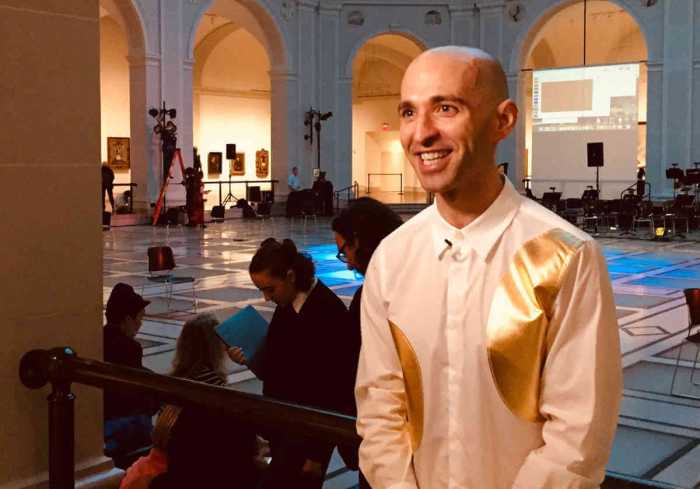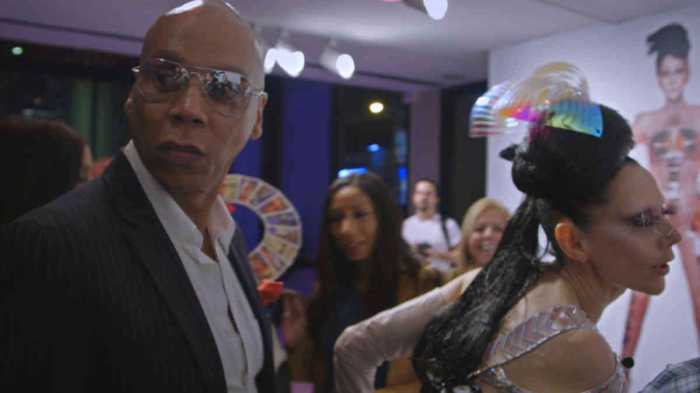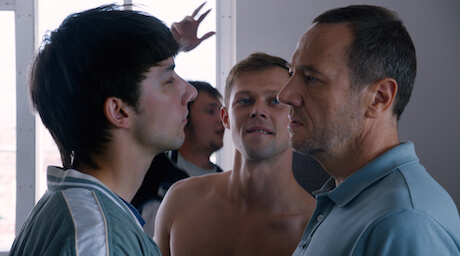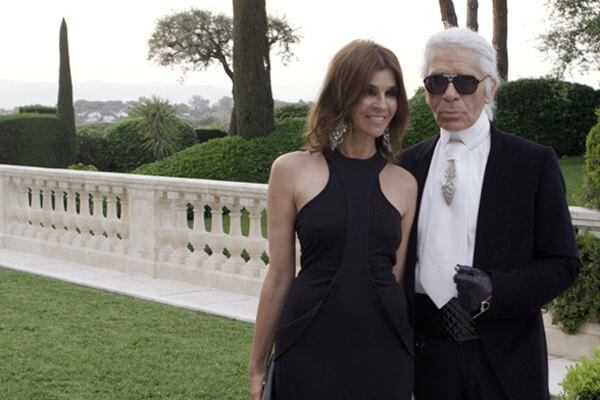Raf Simons, creative director of the House of Dior. | THE ORCHARD
BY GARY M. KRAMER | “Dior and I” is the third fabulous fashion documentary — after collaborations on “Valentino: The Last Emperor” and “Diana Vreeland: The Eye Has to Travel” — made by out gay filmmaker Frédéric Tcheng. It is also the first he alone directed.
This new film observes creative director Raf Simons in 2011 as he prepares his first haute couture show for the House of Dior. Simons creates designs, chooses fabrics, and gets to know his staff, whom he manages well. He also has setbacks, an exquisite if grandiose idea on how to stage the fashion show, and a severe case of nerves.
Tcheng nimbly edits together the eight intense weeks of Simons and his staff preparing their show, seamlessly intercutting archival footage of Christian Dior to give a sense of the fashion house’s history as its future is unfolding.
Frédéric Tcheng chronicles Raf Simons’ debut at Christian Dior
The filmmaker recently spoke via Skype with Gay City News about making “Dior and I.”
GARY M. KRAMER: This is your third fashion doc. Why do you have such an affinity for this world, and how did you come to make “Dior and I”?
FRÉDÉRIC TCHENG: I think it’s just an opportunity, really. I am not particularly fashion oriented or coming from a fashion background. For me, the most important things are the story and the characters. I don’t go to fashion shows except to film. Olivier Biolobos, the head of communication and PR at Dior, fell in love with “Diana Vreeland.” I asked him about the future of Dior with John Galliano out. I told Olivier that if it was going to be Raf, I wanted to document his arrival. Raf’s approach was very different, much more modern. His process was also like that of a painter; his references and collaborations with his models were totally refreshing. This film was a negative mirror of “Valentino.” What happens after the master steps down and the newcomer arrives when there is this strong sense of legacy?
GMK: How did you meet Raf and gain his trust, and that of the workers, to make this film?
FT: We had very little time to gain everyone’s trust. It was stressful for me because this was my first foray into solo directing. We had a few days to convince them we would do a good job. The seamstresses had no problem; they were open and grounded. Once they knew I was more curious about learning, not just filming, they were welcoming. The Dior side of it was a big corporation, so I had to jump through hoops to meet everyone along the hierarchy to open the doors.
The most difficult one was Raf for reasons that are kind of known — he’s reluctant to have any public presence and shies away from cameras and public exposure. He was physically uncomfortable being filmed. When I was rolling Raf coming into the building to meet the seamstresses for the first time was when I met him. I had to convince him to give it a try. He gave me a one-week trial period, and once we started engaging face to face it became a very different story. We got to know each other very quickly. This came at an opportune time. It would not be possible to do it now.
Director Frédéric Tcheng. | THE ORCHARD
GMK: What observations can you make about what you saw during shooting?
FT: People were not always happy with the change, but I tried to show how it was welcome in different ways. I lucked out with the personalities of the premières [managing seamstresses]. I couldn’t have dreamed of more different, conflicting personalities. One is very happy-go-lucky, the other very anxious. It was great to see how Raf made it a point to challenge not only himself but also his collaborators. He talked in his interview with me about trying to make couture not just visually different but also changing the industry and technique of couture by being innovative in the process itself.
GMK: Were there any moments that you were especially grateful to capture?
FT: I couldn’t have dreamt of a better set for the final runaway show. That was my MGM moment! [Laughs.] What surprised me was the level of emotion that Raf brought toward the end of the film. I was praying for that, but I didn’t expect it, knowing his personality and how modest he is. He didn’t like to flaunt his emotions. He’s very thoughtful and generous and understanding of other people’s creative processes, and that certainly applied to me. He later told me didn’t want to be too close during filming because he didn’t want to influence my decisions in the film.
GMK: What can you say about filming the fashion show that ends the film? The slow-motion runway was inspired. The models seemed to just float!
FT: That happened by chance. I’m very happy with how it turned out. Credit Léo Hinstin, who is the cinematographer for the runway segment. He has worked with fashion runways before. I said I didn’t want it to look like typical runway. I wanted a slightly different look and he came up with slow motion and the low angle that made them look sculptural. When I got the footage and played it the first time, I started crying I was so moved by the lightness of the footage.
GMK: Raf compares himself to Dior in the film. How are you like Dior? What qualities as a filmmaker do you share with the famous designer?
FT: I indentified with Raf most — maybe it was my personal journey as it was the biggest scale and responsibility I have done. He had to deal with the legacy of Dior, but I had to deal with my subject and honor them and find my own voice and do something uniquely mine. His creative struggles mirrored mine. Dior was a late bloomer. He worked for other people for a long time — several designers before he started his own line when he was 40. He had several careers, and he came from somewhat of an architectural background. I started as an engineer and got my degree in civil engineering. He was reserved, and that’s something I share with him, and Raf does too.
When I read Dior’s autobiography, he seemed totally genuine in the way he expressed himself. I liked his simplicity. He doesn’t seem self-conscious about how he comes across. I liked the humanity of Christian Dior and how he talked about his collaborators. You get a vivid sense of him and his team from his book. That’s why I decided to use it in the film, and after I met Raf it became obvious — there were so many parallels that the process had not changed in 50 years. It was a way of juxtaposing the past and the present the way Raf does the same with an archival jacket with pants. The two could cohabit and create something new. The voice of Christian Dior became a big part of it as I was researching and as I was shooting, it became very clear, as a voice-over [by poet and writer Omar Berrada]. In editing, we started building the film around that.
DIOR AND I | Directed by Frédéric Tcheng | The Orchard | In English and French with English subtitles | Opens Apr. 10 | Film Forum, 209 W. Houston St.; filmforum.org | Film Society of Lincoln Center, 165 W. 65th St.; filmlinc.com




































